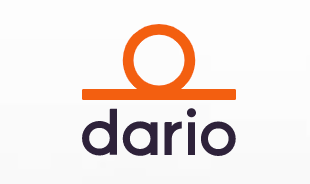Diabetes and Digital Health Interventions: They Look To Be a Match
Diabetes management may lend itself to digital health interventions for a whole set reasons. DarioHealth reported good results recently, and a meta-analysis published in Lancet Digital Health this month showed that smartphone applications and SMS-based interventions are associated with effective management of type 2 diabetes in adults.
Diabetes is a chronic condition that people can exert some control over with medication, diet and exercise.
Whether it is being managed successfully or not can be monitored fairly easily by measuring blood sugar and hemoglobin A1C (HbA1C) levels.
The stakes are high. People with well-managed diabetes can lead normal lives. When poorly managed, diabetes can cascade into neuropathy, amputation, vision loss, heart attack, stroke and premature death. Aside casting a dark shadow of suffering and premature mortality, poorly managed diabetes and its dire consequences are expensive, making dollars-and-cents math of managing it worthwhile.
And, of course, it is common condition. Approximately 500 million people worldwide are affected by type 2 diabetes, and just over 11% of the U.S. population in 2019 had diabetes, according to the Centers for Disease Control and Prevention (CDC). That works out to be 37.3 million people, about 1 in 5 of whom either didn’t know they had diabetes or didn’t report having it, according to the CDC.
It is against this backdrop, both dire and full of opportunities, that a swarm of companies are developing digital health applications designed to improve diabetes management.
But digital health and its subset, digital therapeutics, are big, amorphous categories. The researchers and the some of the companies themselves are busy assessing which interventions are effective and perhaps identifying some of the reasons why.

Last month, for example, DarioHealth (Nasdaq: DRIO) presented findings from two studies at the International Conference on Advanced Technologies and Treatments for Diabetes in Berlin.
Dario has developed and markets digital therapeutic products for metabolic disorders (blood pressure and weight loss as well as diabetes), musculoskeletal and behavioral health.
The company is raising its profile after signing a multiyear contract with Sanofi last year that was described as “accelerating its commercial research” and intended to create more business with employers and health plans. In a press release earlier this month, Dario’s CEO, Erez Raphael, was quoted as saying that the company’s pivot to a business-to-business model had boosted revenue and improved gross margin. The press release says the company’s operating loss in the fourth quarter of 2022 was $9 million compared to $21.7 million in the fourth quarter of 2021
One of the studies that Dario presented at the conference in Berlin included 712 people who use its diabetes therapeutic for type 2 diabetes. The company’s researchers divided the users into two groups, one in which people got help from a human coach and the other which didn’t get coaching. Perhaps not so surprisingly, human contact had an effect. The people in the coached group had an 18% reduction in average blood glucose compared with a 11% reduction in those who received no human coaching, according to a Dario press release.
The company researchers added some nuance with further analysis. People with “low digital engagement”were more affected by coaching than those high levels. “The data suggest that coaching can be used to optimize engagement in a more targeted fashion,” said the press release.
The other study presented looked at hypoglycemic events among 2,844 users, ages 67 or older. Digital engagement reduced milder, level 1 hypoglycemic events by 31% after six months and more serious, level 3 events by 53%, according to the company’s press release.
A large systematic review and meta-analysis published this month in Lancet Digital Health dug deeper into the evidence for digital health interventions for adults with type 2 diabetes, although the results were what one might have expected.
George Moschonis, Ph.D., of La Trobe University led a systemic review and meta-analysis of randomized controlled trials of digital health interventions for management of type 2 diabetes in adults.

George Moschonis, Ph.D., of La Trobe University in Melbourne, Australia, and his colleagues, combed multiple databases of published research to identify studies. They settled on 56 studies to include in their “narrative synthesis” and a smaller group of 26 in their meta-analysis. They grouped the digital interventions into three categories by mode of delivery: smartphone application, website-based and short message service (SMS)-based (text messages). They acknowledged that one of the problems with studying digital health interventions is that intervention often combine technologies and modes of communication.
On the primary endpoint of HbA1C level at three months, study volunteers who “received” a digital health intervention had a .3 percentage point greater reduction than volunteers in control groups.
When they looked at the interventions by type, they found that that smartphone applications produced the greatest HbA1C reduction relative to usual care, followed by the SMS-based interventions, while the website-based interventions did not produce a statistically significant difference.
Moschonis and colleagues discuss the possible reasons for the findings although the study wasn’t designed to explore the reasons behind the results: the growing capability of smartphones, including wearable sensor; synchronous (real-time) communication via the phone’s video camera; and the convenience of a hand-held device.
This “study of studies” of digital health interventions for type 2 diabetes also found that smartphone applications had greater “reach” — the size of the audience that came into contact with the intervention, but, interestingly, the website-based interventions had higher “uptake” — people making use of the interventions.
Moschonis and his colleagues end with a ringing endorsement of smartphone and SMS-based digital endorsements. Nine in 10 people in the world have a phone that can receive an SMS and 6 in 7 have smartphones, they note.
“Clinicians should familiarize themselves with this modality of program delivery and encourage people with type 2 diabetes to use evidence-based SMS and smartphone application interventions for improving their self-management of diabetes,” they concluded, adding that interventions might be especially important for people who live in rural and remote areas.
The Don'ts of Kicking Off Your Digital Health Startup
May 5th 2023This month's episode of Tuning In to the C-Suite features Erica Jain, CEO & co-founder of digital health company, Healthie. In this discussion, Jain shared some of the challenges or things to avoid when creating a digital health startup, based on her journey with starting Healthie in 2016. She also addressed some best practices and tools that can help those working toward a digital health startup.
Listen
Drones in Healthcare Delivery Show Promise, Environmental Factors Play Key Role, Study Finds
November 13th 2023In recent years, the use of drone technologies and healthcare delivery has become a hot topic in scholarly discussions as they have attributed to address challenges associated with poor road conditions, transportation limitations and the need for more efficient responses to healthcare emergencies.
Read More